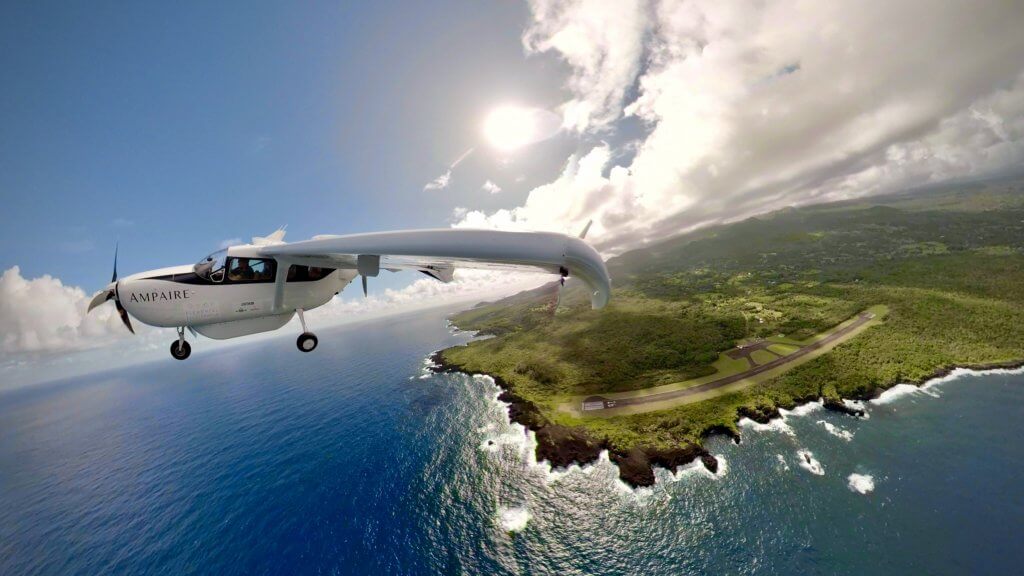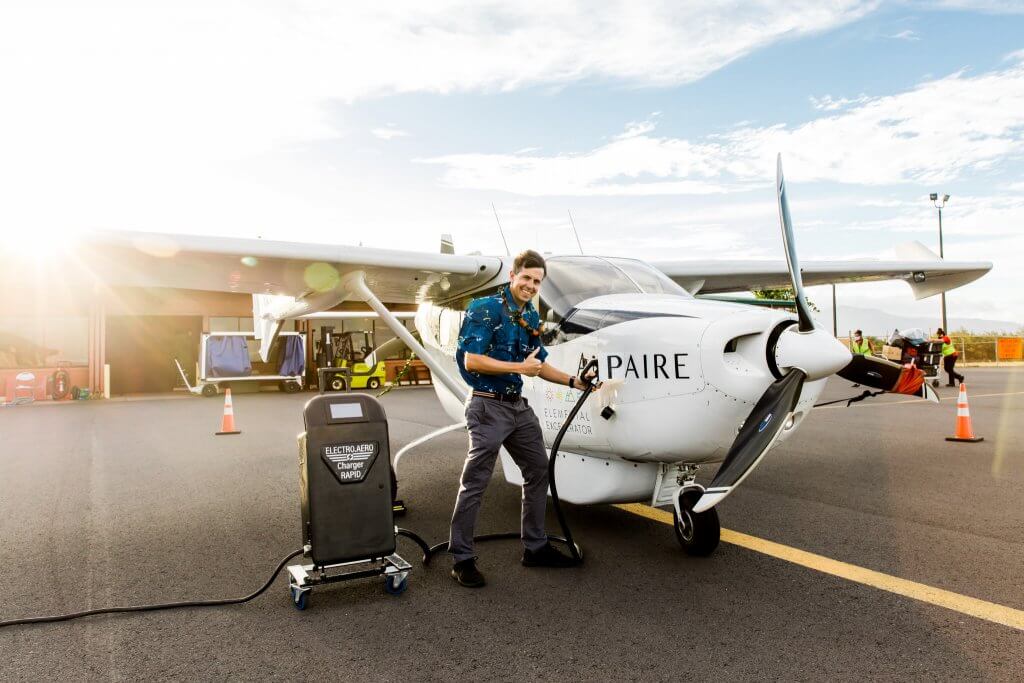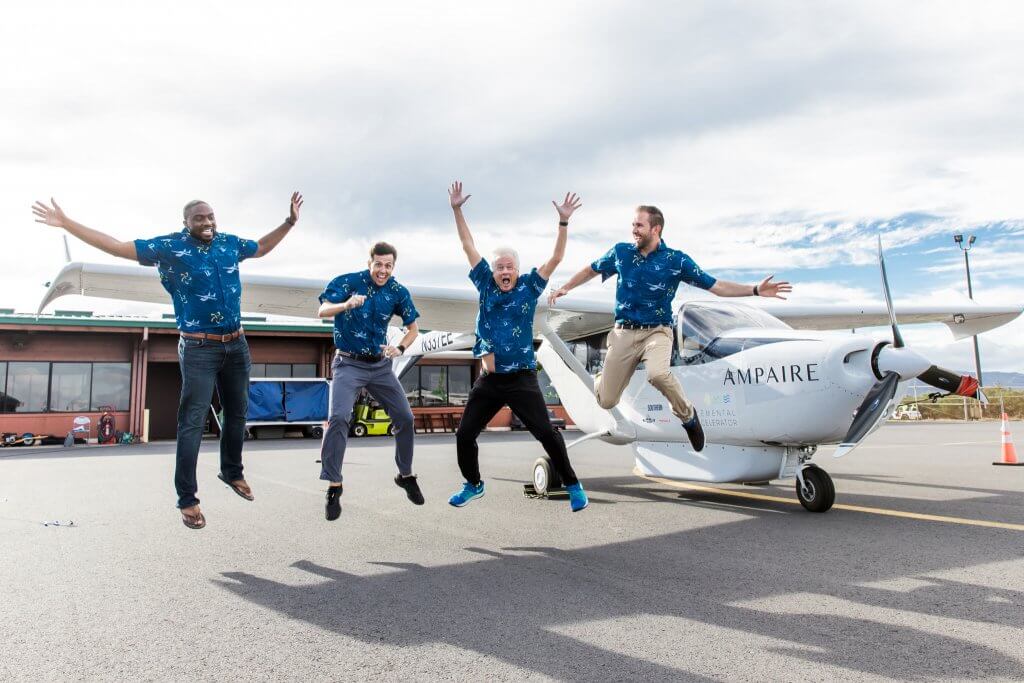
On November 22, Ampaire took to the skies over Maui in a world first for electric aviation. The company’s Electric EEL airplane — an upgraded six-seat Cessna 337 affectionately nicknamed the “Hawaii Bird” — became the first hybrid electric aircraft to conduct test flights on an actual commercial airline route, flying from Maui’s Kahului airport to Hana and back on a single charge.
It could not have been a more gorgeous sight.
The big picture: The flight is part of a month-long demonstration of the company’s hybrid electric technology in partnership with Mokulele Airlines (a subsidiary of Southern Airways, one of the largest commuter airlines in the United States) and with funding and project support from Elemental Excelerator. It represents a giant leap forward in the viability of electric aviation, which promises to reduce costs for airlines and expand access to more rural and island communities, all while lowering emissions and noise pollution.
“Air travel is the final frontier of sustainable transportation,” says Ampaire’s CEO Kevin Noertker. Currently, the aviation industry is responsible for nearly 3% of global emissions, and that share could easily swell as more and more people take to the skies in the future. “We can directly reduce the emissions of those planes by up to 50 percent in our hybrids, and an even greater reduction when we go fully electric.”
Danielle J. Harris, Elemental’s Director of Mobility Innovation, says that with so many hurdles in the aviation space to innovate around, seeing Ampaire’s plane in the air sends a huge signal to the rest of the industry. “We don’t have to curtail the desire to travel to solve the emissions problems stemming from so many people flying,” Danielle says. “This project proves we can create a more sustainable way to continue exploring and discovering the beauty of the world.”

Why take a hybrid approach? Noertker says that Ampaire’s incremental approach will help get electrified aircraft into service as soon as possible. “Think of it almost like a Prius flying in the sky,” he says. Just like that early hybrid-electric car was an essential stepping stone toward the fully electric cars proliferating today, Ampaire’s hybrid technology is the practical first step for aviation.
“From there we will go to plug-in hybrids and eventually fully electric,” he says. “At every step we’ll be able to decrease the environmental impact, as well as save money for our customers.”
What it means for the aviation industry: Stan Little, CEO of Southern Airways, which owns Mokulele Airlines and operates one of the largest commuter aviation fleets in the United States, says that the fuel is one of the biggest expenses for airlines. Electrifying their planes presents a rare opportunity to control costs, lower prices for customers, and create a competitive advantage against major airlines.
“I can promise you this, Southern Airways and Mokulele Airlines are going to be the first airlines to put paying customers on an electrified airplane in the United States and in the world,” Stan says. “And it will be through the Ampaire and Elemental Excelerator partnership.”

The community benefits of electric aviation: In addition to reducing pollution, the fact that electrified flights are so much quieter can benefit people feeling the impacts of having airports adjacent to their neighborhoods, Danielle says. “I grew up in one of those neighborhoods, and the noise is a huge deal. Hopefully we can turn these airports and air operations into benefits for the communities rather than burdens.”
Ampaire’s technology also has the opportunity to reinvigorate smaller regional airports, particularly in rural areas where access is already a challenge and service may drop off as large airlines take a financial hit from the COVID-19 pandemic. “Air service is not some luxury desire, but something that’s necessary for them to get goods and food and medical supplies,” Danielle says. “Seeing how Ampaire can truly help those communities is really inspiring.”
What’s next? One of the biggest lessons from this project, says Danielle, is around the infrastructure needed to support electric aviation. She notes that the technology in the plane itself is just one piece of the puzzle, and it’s just as important for airports and electric utilities to work together on building out the charging infrastructure to support electrification. “It’s really a merging of two industries,” Danielle says.
Southern’s CEO Stan Little agrees that as electrification becomes commonplace, airports will adopt the infrastructure necessary to lure those flights in the same way that hotels and businesses have to get the business of electric vehicle owners. “There’s no question we’re going to see that with airports as well. You won’t be able to survive without it.”





